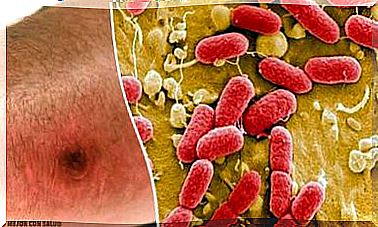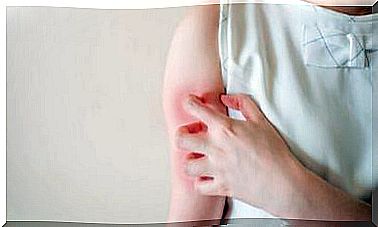Paresthesia: Causes And Prevention
Paresthesia is the sensation we feel when a limb falls asleep. It is transitional, however, in some cases it can be difficult to bear.

The paresthesia is the tingling sensation that we experience in certain areas of our body. It is more common to appear in the extremities, especially in the hands and feet.
It usually does not cause pain but is described as tingling or numbness in the area.
Causes of paresthesia

In most cases, this sensation is caused by increased pressure on nearby nerves. After a few minutes, control over the affected area is regained and the individual returns to normal.
However, there are numerous diseases that influence the appearance of paresthesia.
In the following cases, paresthesia lasts longer and can even cause pain in the affected areas:
Poisonings
They are usually related to heavy metal or arsenic poisoning.
Diabetes
In this disease, blood glucose levels are high. It may be because the amount of insulin is insufficient or that the cells are resistant to the action of this hormone.
Any alteration in the endocrine pancreas, the one in charge of synthesizing insulin, implies alterations in the control of glycemia.
Deficiency of some nutrients
In most cases, the cause is the deficiency of vitamin B12, but dehydration paresthesia can also occur. In these cases, dizziness and a feeling of weakness are common.
Alterations in the functioning of the thyroid
We highlight hyperthyroidism as the main culprit. In this pathology, there is an increase in the production of thyroid hormone.
The result is typical alterations of an accelerated metabolism, such as tremor or tachycardia.
Unhealthy habits
We include smoking, alcoholism and the use of drugs or other toxic substances.
Autoimmune diseases
Some examples are rheumatoid arthritis and lupus erythematosus. During arthritis the joints become inflamed, causing intense pain in the patient. In lupus, the immune system damages the entire body.
Multiple sclerosis
It is a neurological disease that progresses affecting various regions of the body. This situation makes speech and locomotion difficult.
Encephalitis
Inflammation of the brain, made up of the cerebrum, cerebellum, and medulla oblongata. Usually the cause is infectious and requires urgent treatment.
Presence of tumor
In some area within the Central Nervous System (CNS).
Transient ischemic attack
For a short period of time, the blood supply to the brain is cut off. If treated early, symptoms usually disappear within a few days, but it can cause irreversible damage to the CNS.
Other CNS-related pathologies
We can mention the carpal tunnel syndrome, in which there is excessive pressure on the carpal nerve, located in the forearm. Therefore, it causes weakness in the hand and the sensation of paresthesia.
Certain cardiovascular pathologies
Increasing the pressure of the vessels on certain regions of the brain can cause irreversible damage.
Treatment of paresthesia
Normally, the paresthesia disappears within a few minutes because the pressure exerted on the nerve in question stops. However, if paresthesia acts as a symptom of one of the listed pathologies, treatment depends on the condition.
Some alterations such as the deficiency of certain nutrients or certain unhealthy habits can be easily remedied. However, other factors require medical control.
Therefore, some medications and techniques can be prescribed to treat the disease responsible for paresthesia.
On the other hand, if the pain persists, the medical team may recommend the use of analgesics to alleviate the discomfort.
Prevention of paresthesia

The set of pathologies that can lead to the presence of this discomfort is very broad. However, there are some factors that we can easily avoid.
A healthy lifestyle and moderate physical exercise can help reduce the risk of paraesthesia.
However, other pathologies, for example neurological diseases, do not have a decisive prevention.
On the other hand, early detection can save the life of the patient and improve their quality of life from the moment of diagnosis.









